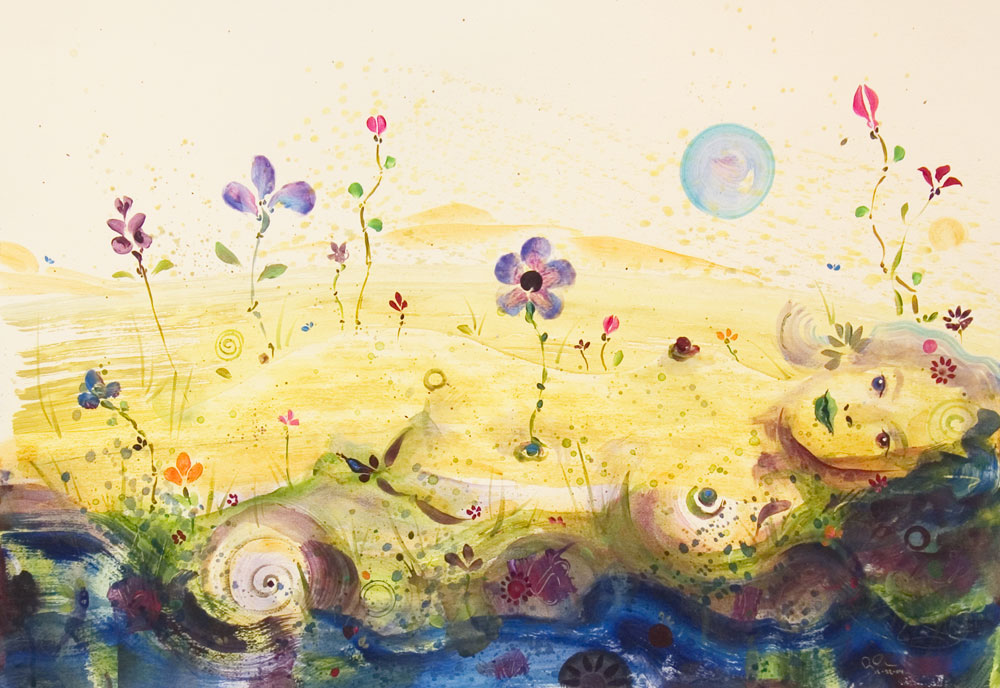This painting represents an interesting hybrid of the Sumi style with something that is somehow quite modern and western to me ( as in western-civ). Happily this piece sold almost right away, but I kind of miss it.
When I look at it now, I see a number of influences––impressionism, Russian Folklore, Sumi Brushstroke, Expressionistic Color. I also really like the way the shape of the nude is mostly created by the absence of paint. In fact the main shape of the torso was created by one broad scrape of a large pallet knife. I had just laid down the initial wash and immediately pressed the blade over the paper––literally squeezing most of the pigment back out of the paper. I was experimenting at the time with painting on printmaking paper. Because print paper is designed to take ink under pressure, it has a very different sizing than watercolor paper. Its much more repellent of moisture and the paint tends to sit on the surface. Then when the lithographic press squeezes it the ink gets pressed into the paper. Something about this type of paper made it very amicable to the hard scrape of the pallet knife.
The composition works subtly in that the suggestion of female form is almost entirely derived from this one stroke. Besides the face and shading that forms the line of the jaw, almost all the other details that suggest female form could easily be floral or other garden elements. In this way the body is suggested by the absence of paint. Put your hand over the right third of the composition to get a stronger idea of how this works. Perhaps this only works because, being human, we are progamed to recognize our own form when it appears around us. This painting started out as a floral landscape with no intent at a figurative component. But as soon as I made that first scrape I knew where it had to go.
The piece was pretty much finished after the first session, but I set it aside and came back the next morning and added the vague suggestion of hills in the far background. (these shapes are also intended to be quasi figurative). I also added the dark blue and maroon tones at the very bottom, trying to emphasize the idea of a stream or river bank. These dark tones anchor the piece and are crucial to it's success.
The imagery is partially inspired by Slavic and ancient Greek mythology. In Slavic folklore the Rusalka function like the ancient Greek water nymph, presenting a alluring and sometimes dangerous temptations. But more interesting for me, they also represent an anthropomorphic perception of nature. personification of the nature spirit provides a mechanism for putting a stronger emphasis on the importance we give towards the natural world. If a stream in the woods we like to hike to moves us, then representing the 'essence' of that stream with a beautiful human figure communicates very strongly the beauty meaning, and perhaps intelligence, we feel about natural place.
